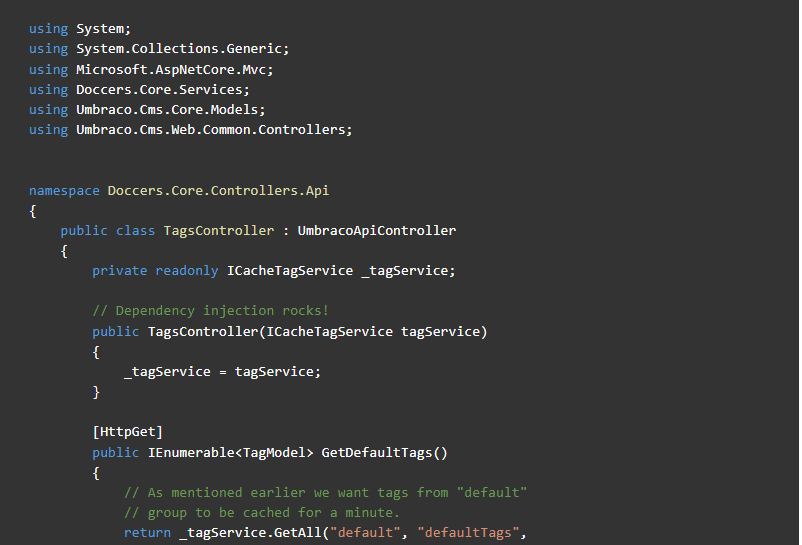Umbraco is one of the most redistributed .Net CMS (content management systems). It was developed with the .Net framework and was invented by Niels Hartvi in 2000. In 2009, Umbraco became one of the leading .Net-based open source Content Management systems downloaded through the Microsoft web platform installer. The Umbraco CMS forms a unified workflow that eliminates hurdles that can hinder your creativity. Read on to learn more about Umbraco.
What Is Umbraco?

Umbraco is written in C#. It enables users to publish content on the intranet and the internet. Since the launch of Umbraco 4.5, the CMS has been operating the MIT (Massachusetts Institute of Technology) license as software. The Umbraco CMS ensures limitless editing. The Umbraco community has 200,000 registered users. Umbraco’s code is available to the public on Github.
Umbraco CMS Features
Content editing
Umbraco offers a simple and intuitive content editor that allows you to create and edit content on your website easily.
Multi-language support
Umbraco supports multiple languages, making it easy to create websites that cater to users from different regions.
Customizable templates
Umbraco provides a range of customizable templates that you can use to build your website. You can also create your own custom templates if needed.
Flexible content structures
Umbraco allows you to create complex content structures that can be used to organize your website content in a logical way.
Media library
Umbraco includes a media library where you can store and manage all your website’s images, videos, and other media files.
User management
Umbraco allows you to create and manage user accounts, assign user roles, and control access to different parts of your website.
Search engine optimization (SEO)
Umbraco provides built-in SEO features, including support for metadata and search-friendly URLs, that can help improve your website’s search engine rankings.
E-commerce support
Umbraco offers a range of e-commerce features, including support for online shopping carts, payment gateways, and order management.
Third-party integrations
Umbraco supports a wide range of third-party integrations, including popular tools like Google Analytics, MailChimp, and Salesforce.
Mobile responsiveness
Umbraco is designed to be mobile-responsive, ensuring that your website looks great on all devices, including smartphones and tablets.
Is Umbraco a Good CMS?
Umbraco is a scalable Sitecore CMS platform that is ideal for managing multiple pages. It is user-friendly, allowing you lots of freedom when establishing integration using third-party tools. It’s also an extensible platform.
Is Umbraco a Headless CMS?
Umbraco is a headless CMS. It’s flexible for editors and user-friendly for editors. It’s developed on an open-source CMS that powers more than Umbraco websites worldwide.
Is Umbraco Free for Commercial Use?
Umbraco CMS is the free, open-source format of Umbraco. Apart from being managed by Umbraco HQ, the content management system is developed and constantly updated by an unwavering online developer community. Whether you are looking for excellent functionality or a seamless editing experience, Umbraco is a great tool.
Is Umbraco a Good CMS for Beginners?
Yes. Umbraco.com CMS is a user-friendly, open-source CMS. Experts manage it at the organization’s HQ in Denmark. You don’t have to be a technical person to manage the Umbraco backend effectively.
Which Programming Languages Does Umbraco Use?

Umbraco is predominantly written in C#. It stores data in a relational database like Microsoft SQL Server and operates on Microsoft IIS. Its frontend is developed using ASP.Net on Microsoft’s .Net Framework. Umbraco add-on CMS used standard ASP.Net features like ASP>Net master webpages to aid the creation of renewable page layouts. It supports XSLT and Razor.
Umbraco CMS Pros and Cons
Knowing the strengths and weaknesses of Umbraco helps you determine whether it’s ideal for your needs. Here are its pros and cons.
· Pros
Functionality and Limitless Design
Umbraco does not limit users to using a specific template or layout design. Its usefulness and design are endless.
Scalability and Performance
While Umbraco HTML beats WordPress, it should be configured appropriately. The phase uses ordering and reserving to help improve its presentation and convey its substance. Umbraco operates smoothly and quickly due to its consistent improvements.
Security
Umbraco CMS is one of the most secure platforms in the industry today. It’s a Net technology that inherits various .Net security features that PHP-oriented CMS systems lack. It features balances and checks to block malicious code.
Ease of Use
Umbraco is modern, spotless and client intuitive, making it easy for CMS providers to change and manage content on their websites.
Built Using the .NET Stack

Umbraco is adaptable and extensible, meaning users can quickly achieve anything along the advancement stage. It’s also futuristic, meaning you can use it in future projects.
Third-party Integration Capacity
Umbraco comes with an API platform which can be used as an effective out-of-the-case combination for foreign frameworks such as displaying suits, event booking systems, and installment entryways.
Active Developer Communities
A community of dedicated global developers plays a core role in supporting Umbraco. These developers also collaborate in providing progressing improvements to the core framework and other inbuilt bundles.
· Cons
There are various downsides of Umbraco, which include:
Plugins
While Umbraco comes with a wide range of plugins, they are insufficient to support extended functionality. Developers may have to execute custom development to find the ideal modules and themes to develop MVC Umbraco-based websites.
Popularity
While Umbraco’s popularity has risen over the last few years, WordPress remains the more popular content management system.
Unsuitable for eCommerce Websites
While you can use Umbraco for eCommerce websites, the process can be challenging. Due to the unavailability of plugins, you will have to invest time to develop SEO custom modules and themes for developing and integrating into the site. Other CMS platforms come with standard inbuilt eCommerce features.
Requirements for Umbraco CMS Development

The minimum requirements for Umbraco CMS development include:
- All modern browsers
- An operating system
- A .Net editor or tool which can include Microsoft Visual Studio 2019 16.8 or higher, SQL connection string (SQL Server), or JetBrains Rider 2020.3 and higher
- Hosting from SQL Server 2019 and higher, IIS 10 and higher, or Windows Server 2019 and higher. You will also need the ability to activate permissions to incorporate write/read/create for users who own your website’s Application Pool.
Developers can choose an appropriate Umbraco Cloud pricing plan to control the hosting infrastructure.
What Is Umbraco Used For?
Umbraco CMS can be used to develop nearly every type of internet application, from mobile apps to complex eCommerce stores and enterprise portals. It is ideal for marketing agencies that want to collaborate with enterprises or small businesses seeking a scalable content management framework.
How To Use Umbraco CMS
You can use Umbraco to:
- Create websites
- Configure multilingual web pages. Worth pointing out is that the language variants functionality is only available in Umbraco 8.
- As a marketing tool
- To develop a custom dashboard
- To implement the editor’s manual
- As a starter kit for beginners
Umbraco CMS Example
Add and annul from the runtime cache. This tutorial involves the use of tags on a website that features two tag properties which are:
- One for each page using the blog tag group
- One for each page using the default tag group
In this example, developers exposed an endpoint allowing them to acquire the tags from each group. The default tags should be cached for one minute, while the blog tags would remain cached until the website restarts or when the developers publish a blog post node at the back office. Tags are perfect for demo purposes because they aren’t cached by default.
· TagService

First, developers will create a CacheTagService. Here, a primary class with a single method (GetAll) covers Umbraco’s TagQuery.GetAllTags(). Now developers can introduce ICacheTagService in any builder in their project.
· API
Here, the developer will develop an endpoint where they can collect the cached tags.
Now that we have our service, it’s time to create an endpoint where we can fetch the (cached) tags.

Everything should now work well regarding acquiring tags. However, the changes won’t appear on the endpoint if you return to your back office and include a new tag on your blog. Here is how to fix that.
· Unblocking Cache on Publish
To unblock the cache, the developer will require a notification manager where they register to the ContentPublishedNotification case on the ContentService. That allows them to run a code section when they publish a node.

After acquiring the notification, the registration process follows. Include builder.AddNotificationHandler<ContentPublishedNotification, Notification>() in the composer category to the compose process. It will appear as shown in the image below.

Now you will have configured caching on your tags, accelerating your site’s performance.
Umbraco CMS Example Sites
Microsoft ASP.NET
The official website for Microsoft’s ASP.NET web application framework is built using Umbraco CMS. The site features a clean and modern design with easy navigation and organized content.
Costa CoffeeÂ
Costa Coffee, a popular UK-based coffee chain, uses Umbraco CMS for their website. The site features an engaging and interactive design with information about their products, promotions, and locations.
Heinz
Heinz, a global food company, uses Umbraco CMS for their website. The site features a clean and modern design with easy navigation, recipe ideas, and information about their products.
Peugeot
Peugeot, a French automotive company, uses Umbraco CMS for their website. The site features a sleek and stylish design with information about their cars, services, and promotions.
Amnesty International
The Amnesty International UK website is built using Umbraco CMS. The site features a simple and user-friendly design with information about human rights issues and how to get involved in the organization’s campaigns.
Finally
Umbraco CMS is one of the oldest platforms that comes with unique functions. It has undergone numerous significant improvements and changes since it was first developed. Umbraco CMS comes with pros and cons as we have seen in this article. Contact us today to learn more about Umbraco CMS and how you can use it to fulfill your business needs.



